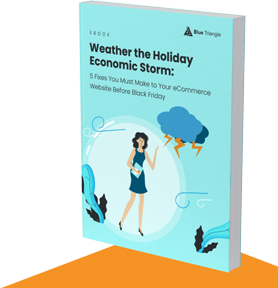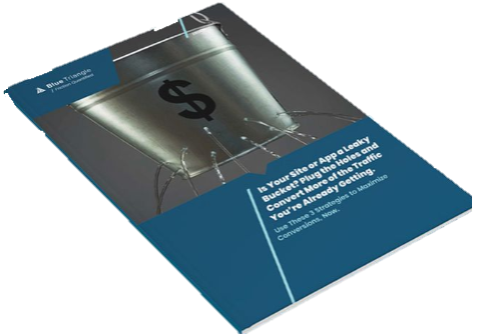Customer experience leaders live in a paradox. On one hand, executives want proof that CX initiatives will deliver ROI. On the other hand, many of the most meaningful impacts such as loyalty, retention, and revenue growth take years to materialize in the data. That tension can stall progress, create skepticism, and derail transformation efforts.
At Microsoft, Zehra Syeda-Sarwat, Global Head of CX Strategy and Insights, has helped build a playbook that strikes a balance between urgency and patience. In a recent episode of The Frictionless Experience, she shared how she prioritizes CX initiatives and sustains conviction while results take time to emerge.
Her lessons apply far beyond Microsoft. Whether you lead CX at a startup or a global enterprise, these five principles can help you cut through the noise and keep moving forward.
1. Start With the Customer’s Voice
Too many companies still prioritize based on gut feel, executive intuition, or the latest shiny object. Zehra’s team starts with something simpler and more reliable: listening.
That mix is critical. Surveys and analytics provide you with quantifiable insights. Customer anecdotes provide texture and urgency. AI now enables the synthesis of both at scale, pinpointing the true pain points.
Zehra likens it to “the train is moving and we’re putting down the tracks at the same time”. You’ll never have a perfectly tidy picture before making choices. But if you aren’t listening broadly, you’re building on shaky ground.
2. Use Effort × Impact to Focus
Once you’ve gathered the feedback, you need to decide where to act first. That’s where the effort × impact matrix comes in.
The idea is simple:
- Effort = the cost of change (people, tech, time, resources).
- Impact = the hypothesis that doing X will move Y (loyalty, retention, revenue).
Effort is the easier side of the equation. “Effort is pretty clear… people, technology, et cetera. It’s easier to quantify that”. Impact is harder: “Sometimes you really need a few years to prove that hypothesis… if we improve experience, customers would want to stick with us… revenue growth, consumption growth, market share growth”.
This is where conviction intersects with analysis. You won’t always have airtight proof that an initiative will deliver immediate results. But if you know it’s low effort and plausibly high impact, it belongs on your priority list.
3. Conviction Sustains the Long Game
Here’s the reality: CX is a long game. Some “quick wins” may yield results within a quarter, but most meaningful payoffs — such as customer loyalty — only emerge years later.
That requires more than dashboards. It requires belief.
Conviction, however, isn’t just a leadership talking point. It has to become an organizational commitment. Zehra frames it as an equation: “It’s really the three C’s… connection plus conviction is equal to commitment”.
- Connection means employees feel personally tied to the mission. It’s not just a corporate goal — it’s something they live and breathe.
- Conviction means leaders consistently reinforce the belief that CX drives business outcomes.
- Together, they create commitment — the willingness to invest in CX even when quarterly results don’t yet reflect the long-term payoff.
To reinforce connection, Zehra borrows a page from marketing: make transformation fun. She describes how Microsoft launched a CX award, complete with executive recognition and playful swag. “We went out there and partnered with our very senior executives… little things like golden jackets… because then people are looking at it, you ignite curiosity”.
As she put it, “Never underestimate the power of swag…it makes a huge difference and it brings a fun environment”.
That internal marketing matters. Conviction alone feels heavy. Connection makes it personal, energizing, and sustainable.
4. Sequence Quick Wins and Long-Term Bets
Of course, conviction doesn’t mean ignoring quick wins. In fact, sequencing them wisely is essential to maintaining momentum.
She compares it to shopping. Every time a delivery box shows up on your doorstep, it feels rewarding. That little dopamine hit keeps you excited. CX quick wins work the same way. Customers feel the impact. Employees see progress.
But if you stop at quick wins, the excitement fades and the structural problems remain. That’s why you must start the “big rocks” — the two-to-three-year initiatives — early. They require more investment and sponsorship, but they’re the ones that truly change the game.
The art is in balancing both: giving people the satisfaction of quick wins while building toward the bigger transformation.
5. Fix Employee Friction With AI as a Force Multiplier
Finally, don’t overlook internal friction. Customers often feel the effects of employee struggles, such as long wait times, inconsistent answers, or clunky processes.
“Our mission really is around, how do we look at employee journeys, especially for employees who are customer facing, identify friction points… and then eliminate those friction points”.
For Microsoft, that meant focusing on areas like account planning and customer success planning — tasks that were necessary but burdensome.
Here, AI became a force multiplier. “How do we use AI again to simplify the workflows, making them faster, more efficient, where possible. Using agentic AI to drive a lot of the automation, using a hybrid model where we use a combination of agentic AI and the human touch”.
The benefit is dual: employees reclaim time and energy, while customers experience smoother, faster outcomes. As Zehra summarized, “Employees are happier because now they can get their work done faster with less effort… it’s going to help them deliver better outcomes for our customers”.
This dual outcome is the essence of CX transformation. Fixing employee friction isn’t just an HR exercise. It’s a direct lever for improving customer experience.
The Bottom Line
The impact of customer experience is notoriously hard to prove quickly. Effort can be measured in hours and dollars. Impact often takes years. That’s why prioritization and conviction are so critical.
Zehra Syeda-Sarwat’s five lessons offer a roadmap:
- Start with the customer’s voice.
- Use effort × impact to focus.
- Build conviction (and connection) to sustain the long game.
- Sequence quick wins alongside long-term bets.
- Fix employee friction with AI as a force multiplier.
As Zehra put it, “Without that conviction and belief, especially at the leadership level, it becomes really difficult to ignite execution”.
For CX leaders, that’s the challenge — and the opportunity.

During the holiday rush, every shopper matters
Optimize the customer journey before the eCommerce event of the year.

.jpg)

.png?width=734&height=615&name=MSFT-1%20(New).png)
.png?width=734&height=615&name=MSFT-2%20(New).png)


